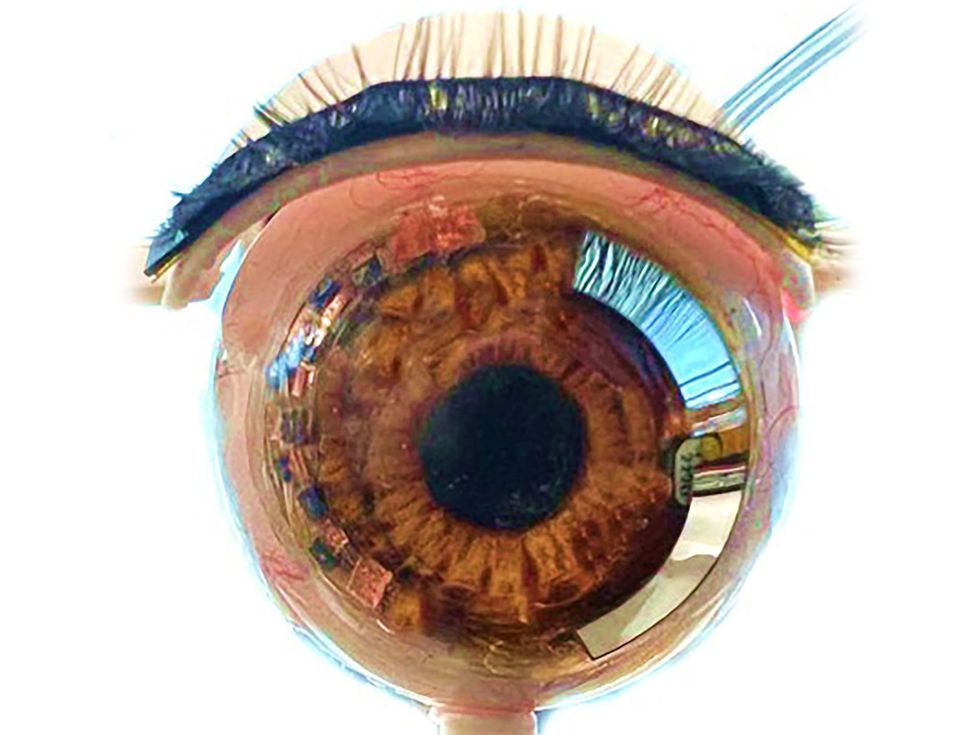2012 is shaping up to be a very interesting year for particle physics. After more than a week full of rumors and speculation, the European Organization for Nuclear Research (CERN) finally held a press conference on Tuesday and officially announced the discovery of a tantalizing hint of the elusive Higgs boson, the last piece of the standard model of particle physics.
Teams at the CMS and ATLAS experiments at CERN's $6.5-billion Large Hadron Collider (LHC) have analyzed the products of hundreds of trillions of proton-proton collisions. Both have found evidence of an excess number of particles that could arise from the decay of Higgs bosons. Even more promisingly, both experiments have found an excess at roughly the same energy: 125 billion electron volts, or GeV, a bit more than a hundred times the mass of the proton.
That's great news for the Higgs boson hunt. The Higgs particle is formed by ripples in the Higgs field, which is thought to pervade space and endow particles with mass. But the standard model of particle physics – which describes nature's fundamental particles – makes no definitive prediction for how heavy the Higgs might be. After years of searching, physicists have steadily narrowed down the mass window where the simplest version of the Higgs particle might be hiding. The data collected by the LHC has been fast approaching a volume that would enable physicists to either find or exclude the presence of that particle.
But the LHC isn't there yet, and spokespeople for both experiments caution they have not made a definitive detection. The bumps CMS and ATLAS found could point to the Higgs, but they could just as well be noise. Declaring a discovery will require more statistical certainty. Physicists typically demand five standard deviations in order to declare a definitive discovery–a number that corresponds to odds of less than a one in a million that a signal would turn up by chance. The certainty of the evidence presented by each of the Higgs hunting experiments is less than four standard deviations, corresponding to odds of more than one in 20,000.
These signals will either improve or disappear with more data. According to news reports, CMS and ATLAS physicists expect that they will be able to say with certainty whether this week's hint was actually the first sign of a real particle by the end of 2012, when about four times as much data will be available.
For further reading while you wait, I’d suggest this basic overview of the Higgs boson and why it’s important by physicist Lawrence Krauss at New Scientist. For more on how we’ll find the Higgs if it exists, I recommend two posts in Discover magazine's Cosmic Variance blog. CMS member John Conway has a good post on how the CMS and ATLAS teams – each of which boasts thousands of physicists – “make the sausage” (i.e. coordinate the hunt). And theorist Matt Strassler has a good run-down of what these teams will look for and in what order.
Illustration: CMS/LHC
Rachel Courtland, an unabashed astronomy aficionado, is a former senior associate editor at Spectrum. She now works in the editorial department at Nature. At Spectrum, she wrote about a variety of engineering efforts, including the quest for energy-producing fusion at the National Ignition Facility and the hunt for dark matter using an ultraquiet radio receiver. In 2014, she received a Neal Award for her feature on shrinking transistors and how the semiconductor industry talks about the challenge.



